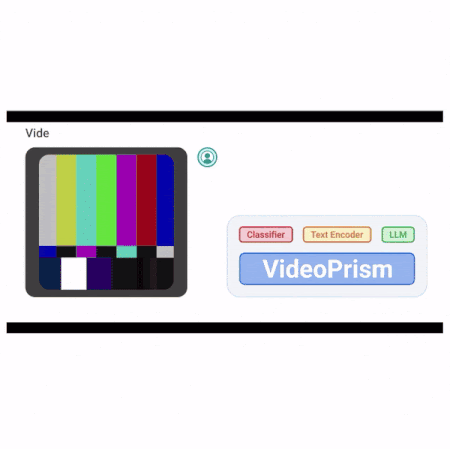VideoPrism, a groundbreaking video encoder by Google AI, addresses the complexities of diverse video content. Understanding and analyzing videos is increasingly challenging amid their rapid proliferation across platforms.
Existing models often struggle to effectively capture appearance and motion cues, hindering comprehensive video understanding. Recognizing these challenges, Google researchers embarked on a mission to develop a solution to overcome these limitations and provide a holistic approach to video understanding.
VideoPrism addresses the shortcomings of existing models by introducing a novel two-stage pretraining framework. This framework integrates video and text modalities during pretraining, allowing the model to learn semantic representations from multiple data sources. By combining contrastive learning with masked video modeling, VideoPrism can effectively capture appearance and motion cues, paving the way for a more comprehensive understanding of diverse video content.
Innovative approach with Google AI VideoPrism
VideoPrism represents a groundbreaking advancement in video comprehension, boasting a sophisticated architecture rooted in the innovative Vision Transformer (ViT) framework. However, what truly sets VideoPrism apart is its tailored adaptations for space-time factorization.
This technique allows the model to analyze video data efficiently by dissecting its visual and temporal components. This meticulous approach empowers VideoPrism to extract rich insights from videos, discerning meaningful patterns and correlations embedded within the visual and temporal cues.
Moreover, it integrates cutting-edge methodologies such as global-local distillation and token shuffling. These techniques elevate the model’s performance, ensuring it achieves state-of-the-art results across video comprehension tasks. By amalgamating these advanced strategies, VideoPrism enhances its efficiency and deepens its understanding of video content.
Adding to its arsenal of capabilities is VideoPrism’s unique two-stage pretraining framework. In the initial phase, the model undergoes a comprehensive alignment process wherein it synchronizes video and text embeddings through contrastive learning. This synergistic approach harnesses the strengths of both modalities, fostering a holistic semantic understanding crucial for accurate video comprehension.
Subsequently, it progresses to the second stage, refining its comprehension prowess through masked video modeling. By exclusively training on video data in this phase, the model fine-tunes its representations and hone its performance, thereby enhancing its adaptability to diverse video content. This iterative process bolsters the model’s robustness and solidifies its efficacy in capturing the intricate nuances embedded within the vast landscape of video content.
State-of-the-Art Performance
Extensive evaluations have rigorously tested VideoPrism, showcasing its exceptional performance across various video understanding tasks. The model’s prowess is evident in its outstanding results on 30 out of 33 benchmarks, underscoring its versatility and effectiveness across different scenarios.
By demonstrating proficiency in tasks that demand the capture of visual appearance and motion dynamics, it has established itself as a frontrunner in video comprehension.
The significance of VideoPrism’s capabilities extends beyond mere performance metrics. Its capacity to thoroughly dissect diverse video content carries profound implications for numerous applications, including but not limited to video recommendation systems, content moderation protocols, and video summarization techniques.
Through its holistic approach to video analysis, VideoPrism stands poised to revolutionize how we engage with and understand the vast landscape of video media.
Google AI’s introduction of VideoPrism marks a pivotal moment in the evolution of video understanding technologies. With its groundbreaking methodology, superior performance, and robust adaptability, it promises to reshape the landscape of video comprehension, paving the way for a future characterized by enhanced insights and efficiencies in processing and interpreting diverse video content.





